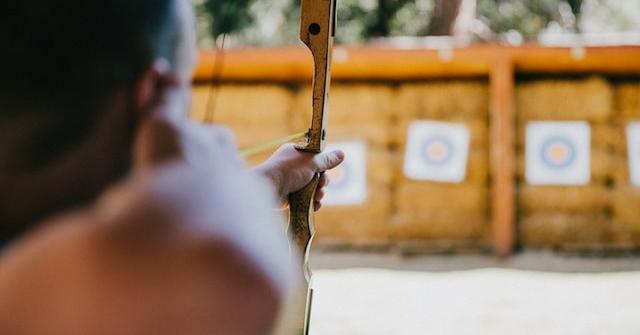Archery is a sport that has captivated the human imagination for centuries. From legendary archers like Robin Hood to the precision of Olympic athletes, archery has a timeless appeal that draws people. If you’re a beginner eager to enter this world of skill and precision, you’ve come to the right place. In this comprehensive guide, we’ll delve deep into the art of archery, covering all the crucial aspects of training.
-
Understanding the Basics of Archery
Using a bow in conjunction with firing arrows in the direction of a target constitutes the core aspects of the sport of archery. This activity’s sophisticated air can be attributed, in part, to the fact that it appears to be devoid of intricacy. The three basic elements that go into making up the whole are the bow, the arrows, and the target. Your journey through archery can be built with these essential features serving as the building blocks throughout the process.
-
Choosing the Right Bow
A crucial first step for beginners is choosing the appropriate bow. No solution works for everyone; your decision should be based on your goals, strengths, and physical attributes. The compound bow and the recurve bow are two popular bow varieties for novices. Recurve bows are a great option for beginners because of their exquisite form, ease of use, and adaptability. It lacks intricate machinery, unlike the compound bow, allowing you to concentrate on honing your form and technique.
-
Proper Stance and Posture
A solid base is essential for shooting accurately. Your stance and posture are the foundational components of a well-executed shot. First, position yourself so your feet are shoulder-width apart and perpendicular to the target. You should tilt your torso ever-so-slightly to the side, with the dominant eye pointing toward the target. Always remember to keep your back straight and your posture calm. From this position, you will be able to draw the bowstring smoothly and evenly.
-
Aiming and Target Acquisition
Aiming is the most crucial aspect of archery, and it demands patience and full concentration to be successful. Keep your attention fixed on the goal, and align it with the eye that you normally use. Make use of the sight mounted on the bow, or choose a point of reference located on the riser. Maintain a smooth draw while concentrating your focus on the target simultaneously. On the road to precision, one of the first steps is to locate the correct aiming point and then educate their muscles to remember where that point is.
-
Releasing the Arrow
In archery, the moment of arrow release is crucial. It’s essential to gradually release the bowstring without sudden movements to guarantee an accurate shot. A common novice error that can cause inconsistent results is snapping or punching the release. Instead, pay attention to relaxing your fingers and letting the bowstring naturally unwind. A clean release makes sure that there are no unintended detours for the arrow as it moves downward.
-
Consistency and Practice
Keeping one’s form consistent is necessary for becoming an archery master. Consistent and dedicated practice is vital to develop muscle memory and further hone their talents. You should begin by traversing short distances, and then, as your capability increases, you should gradually increase the amount of land that you traverse. You can use an archery simulator in order to improve your aim and practice your skills. Because archery is a sport in which repetition is essential to success, every shot provides an opportunity to further refine one’s form.
-
Safety Precautions
Archery can be regarded as a sport without inherent dangers if it complies with the recommended safety measures. Always be sure to look around the area you are shooting in to ensure no people or obstacles are in the path. Use a good backstop or target that can stop arrows from hurting anyone and keep people from getting in the way of your shot. Wearing the appropriate protective gear, such as an armguard and finger tab, can also protect you from any string slaps or finger injuries. The armguard and finger tab are designed to prevent string slaps.
Conclusion
Archery is a rich and enjoyable sport with many advantages for the body and mind. Although there are archery simulators for practice, nothing can match the physical feeling of actual archery. After reading this comprehensive guide, you possess the necessary information to confidently start your archery journey. Remember that the keys to success in archery are perseverance, practice, and dedication. So, grab your bow, nock an arrow, and embark on this thrilling journey.






